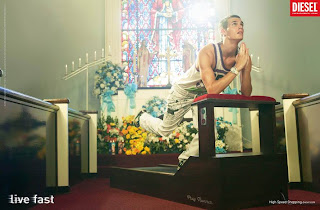Isidro Blasco
Isidro Blasco was born in Madrid in 1962. He lives and works in New York. He has shown his work extensively including solo exhibitions at DCKT Contemporary, New York, PS1 MOMA Museum, New York, Queens Museum, New York, ACA Gallery, Savannah College of Art and Design, Atlanta, Hilger Contemporary, Vienna, Museo Nacional Centro de Arte Reina Sofia, Madrid, and Fúcares Gallery, Madrid. His work is in the collections of the Museum of Modern Art, New York; Whitney Museum of American Art, New York; Queens Museum of Art, New York; Chicago Institute of Art; Baltimore Museum of Art; Fundacio Pilar i Joan Miró; Palama de Mallorca, Spain; and the Museo de Arte Contemporaneo de Elx, Spain.
Blasco’s work combines architecture, photography, and installation to recreate images of interior spaces and exteriors of buildings. His photo-sculptures are three-dimensional visual articulations of a particular place that provide broader insights into how we perceive ourselves in a man-made environment. Blasco is not interested in the formal practice of photography, but uses the photographic process to form the value, shape and density of the final three-dimensional sculpture. The photo sculptures represent Blasco’s personal and subjective perception of a particular environment. Blasco starts a piece by taking photographs while standing in a fixed location so that all of the images taken at a specific site are from one point of view. He then makes miniature architectural maquettes, before starting to work on the finished piece. Blasco laminates the photographs and then mounts the multiple views of rooms or edifices on complex wooden armatures. Beginning with a single angle in a room or from the street, Blasco constructs a new spatial experience from a series of altered perspectives, fragmenting the single viewpoint into a myriad of possibilities. Blasco’s work is very much influenced by Analytical Cubism. Like Picasso and Braque, Blasco uses fragmentation and presentation of objects in multiple points of view to provoke change in the viewer’s perception. The effect for the viewer can be surprising, disorienting, and intimate all at once, a kinesthetic re-experiencing of space through disjointed photographic mapping.
http://www.artnowonline.com/galeria/Contrasts_Gallery/Isidro_Blasco/Isidro_Blasco.php
Images from:
http://www.google.co.uk/imgres?imgurl=http://www.softpink.com/wp-content/uploads/savannah-006.jpg&imgrefurl=http://www.softpink.com/%3Fm%3D200907&usg=__CGcTSAgSLRRrYDM_w2SJMYOU9mM=&h=1133&w=850&sz=210&hl=en&start=16&zoom=1&itbs=1&tbnid=66RqItf4TgsZdM:&tbnh=150&tbnw=113&prev=/search%3Fq%3DIsidro%2BBlasco%26tbnid%3Doc57Tmcm8DxMmM:%26tbnh%3D0%26tbnw%3D0%26hl%3Den%26biw%3D1259%26bih%3D848%26tbm%3Disch&ei=cxjJTfOzNpH1sgbu4_TeAw
http://www.google.co.uk/imgres?imgurl=http://www.dominikmerschgallery.com/sysfiles/artists/Shanghai-at-last-I_web.jpg&imgrefurl=http://www.dominikmerschgallery.com/Artist.aspx%3Fid%3D23&usg=__EbzL2oMSrkFUvjaK8uJKTOrOveI=&h=594&w=443&sz=128&hl=en&start=15&zoom=1&itbs=1&tbnid=qoNbPSIUzmMcyM:&tbnh=135&tbnw=101&prev=/search%3Fq%3DIsidro%2BBlasco%26tbnid%3Doc57Tmcm8DxMmM:%26tbnh%3D0%26tbnw%3D0%26hl%3Den%26biw%3D1259%26bih%3D848%26tbm%3Disch&ei=cxjJTfOzNpH1sgbu4_TeAw
http://www.google.co.uk/imgres?imgurl=http://www.cdan.info/web/Boletines/0804/images/0804_NOT_Exposiciones_CDAN_1.jpg&imgrefurl=http://www.cdan.info/web/Boletines/0804/Newsletter_0804__index.htm&usg=__0NR91piM3grdHmo_KBfCNIj32fU=&h=352&w=300&sz=105&hl=en&start=11&zoom=1&itbs=1&tbnid=Y-1lgDdX5j_WBM:&tbnh=120&tbnw=102&prev=/search%3Fq%3DIsidro%2BBlasco%26tbnid%3Doc57Tmcm8DxMmM:%26tbnh%3D0%26tbnw%3D0%26hl%3Den%26biw%3D1259%26bih%3D848%26tbm%3Disch&ei=cxjJTfOzNpH1sgbu4_TeAw
Monday, 28 February 2011
Saturday, 26 February 2011
Illustration inspirations
Peter Callesen
Danish artist Peter Callesen works mainly with the humble white paper in different objects, paper-cuts, installations and performances. His paper-cuts and sculptures are astounding feats of craft, wherein the "impossible becomes real". Castles, the Tower of Babel,cages, doves and ruins are just some images which popular this artist's romantic universe. The paper-cuts embody their own melancholy: each 3D paper sculpture is stuck to a 2D cut space on a piece of paper, suggesting the tragedy of never being able to escape one's origin.
Emma Hack
I was truly inspired by the "wall paper" design of Emma Hack, who is known as a " body artist", meaning her canvas of choice is the human body. Using wall paper designed by Florence Broadhurs, Hack painted models to match, making them literally disappeared into the wall. Here detailed work matches the walls patterns to a tee, creating an effect that even the best Photoshop jockey would be hard pressed to replicate.
Painter and sculptor Emma Hack's collection, "wall paper", is a serious of meticulously painted models made to blend in with the design behind them-true wallflowers! Hack must have been incredibly patient when working on canvas that move and breathe; her work is so precise, if you blur your vision, the models effortlessly become part of the wall paper.
Slinkachu
The simplest way to describe Slinkachu is as a London-based artist who creates very small street-based illustrations and then photographs them: from far away and up-close. He could also be describe as a miniaturist. He modifies tiny human figurines from model train sets and places them in real urban situation, capturing them sight-seeing,camping,grocery shopping, fighting and dying. A tiny man in a suit holds a spent life-size matchstick and gazes at his now scorched car called"company car" A miniature man holding a rifle, who has seemingly just shot a life-sized bee, says to his crouching daughter, " They are not pets,Susan".
http://www.google.co.uk/imgres?imgurl=http://pauljhogan.co.uk/wordpress/wp-content/uploads/2011/03/Slinkachu-3.jpg&imgrefurl=http://pauljhogan.co.uk/wordpress/2011/03/skinkachu-a-new-way-to-interact-with-the-city/slinkachu-3/&usg=__mK0-0eIFVhGlONGWQzno7-GsK9s=&h=366&w=550&sz=56&hl=en&start=8&zoom=1&itbs=1&tbnid=6Ln8Tt40TWKGoM:&tbnh=89&tbnw=133&prev=/search%3Fq%3Dslinkachu%26tbnid%3Doc57Tmcm8DxMmM:%26tbnh%3D0%26tbnw%3D0%26hl%3Den%26sa%3DX%26biw%3D1259%26bih%3D848%26tbm%3Disch%26prmd%3Divnsfd&ei=bxzJTfTLDYWF-wbR_qzUBQ
http://www.google.co.uk/imgres?imgurl=http://idontlikemondays.us/blog/the-lair-slinkachu.jpg&imgrefurl=http://www.idontlikemondays.us/labels/culture%2520vulture.html&usg=__q8ouFcWaFV62-NMTKDbWkCabdks=&h=960&w=1280&sz=160&hl=en&start=44&zoom=1&itbs=1&tbnid=EOzms_DQm9acWM:&tbnh=113&tbnw=150&prev=/search%3Fq%3Dslinkachu%26start%3D40%26tbnid%3Doc57Tmcm8DxMmM:%26tbnh%3D0%26tbnw%3D0%26hl%3Den%26sa%3DN%26ndsp%3D20%26biw%3D1259%26bih%3D848%26tbm%3Disch%26prmd%3Divnsfd&ei=lxzJTeGlNcqN-wbHqpWDBg
http://www.google.co.uk/imgres?imgurl=http://www.colectiva.tv/wordpress/wp-content/uploads/2009/09/slinkachu-fameslinka3.jpg&imgrefurl=http://www.colectiva.tv/wordpress/tag/slinkachu/&usg=__98QoFCvd6vTnBUxSHR27YDZUPSc=&h=334&w=500&sz=37&hl=en&start=55&zoom=1&itbs=1&tbnid=7QnZmVnfPVpRFM:&tbnh=87&tbnw=130&prev=/search%3Fq%3Dslinkachu%26start%3D40%26tbnid%3Doc57Tmcm8DxMmM:%26tbnh%3D0%26tbnw%3D0%26hl%3Den%26sa%3DN%26ndsp%3D20%26biw%3D1259%26bih%3D848%26tbm%3Disch%26prmd%3Divnsfd&ei=lxzJTeGlNcqN-wbHqpWDBg
http://www.google.co.uk/imgres?imgurl=http://pauljhogan.co.uk/wordpress/wp-content/uploads/2011/03/Slinkachu-3.jpg&imgrefurl=http://pauljhogan.co.uk/wordpress/2011/03/skinkachu-a-new-way-to-interact-with-the-city/slinkachu-3/&usg=__mK0-0eIFVhGlONGWQzno7-GsK9s=&h=366&w=550&sz=56&hl=en&start=8&zoom=1&itbs=1&tbnid=6Ln8Tt40TWKGoM:&tbnh=89&tbnw=133&prev=/search%3Fq%3Dslinkachu%26tbnid%3Doc57Tmcm8DxMmM:%26tbnh%3D0%26tbnw%3D0%26hl%3Den%26sa%3DX%26biw%3D1259%26bih%3D848%26tbm%3Disch%26prmd%3Divnsfd&ei=bxzJTfTLDYWF-wbR_qzUBQ
http://www.google.co.uk/imgres?imgurl=http://idontlikemondays.us/blog/the-lair-slinkachu.jpg&imgrefurl=http://www.idontlikemondays.us/labels/culture%2520vulture.html&usg=__q8ouFcWaFV62-NMTKDbWkCabdks=&h=960&w=1280&sz=160&hl=en&start=44&zoom=1&itbs=1&tbnid=EOzms_DQm9acWM:&tbnh=113&tbnw=150&prev=/search%3Fq%3Dslinkachu%26start%3D40%26tbnid%3Doc57Tmcm8DxMmM:%26tbnh%3D0%26tbnw%3D0%26hl%3Den%26sa%3DN%26ndsp%3D20%26biw%3D1259%26bih%3D848%26tbm%3Disch%26prmd%3Divnsfd&ei=lxzJTeGlNcqN-wbHqpWDBg
http://www.google.co.uk/imgres?imgurl=http://www.colectiva.tv/wordpress/wp-content/uploads/2009/09/slinkachu-fameslinka3.jpg&imgrefurl=http://www.colectiva.tv/wordpress/tag/slinkachu/&usg=__98QoFCvd6vTnBUxSHR27YDZUPSc=&h=334&w=500&sz=37&hl=en&start=55&zoom=1&itbs=1&tbnid=7QnZmVnfPVpRFM:&tbnh=87&tbnw=130&prev=/search%3Fq%3Dslinkachu%26start%3D40%26tbnid%3Doc57Tmcm8DxMmM:%26tbnh%3D0%26tbnw%3D0%26hl%3Den%26sa%3DN%26ndsp%3D20%26biw%3D1259%26bih%3D848%26tbm%3Disch%26prmd%3Divnsfd&ei=lxzJTeGlNcqN-wbHqpWDBg
Friday, 25 February 2011
How to represent musical emotions in illustrations
There are some key words about "How to represent musical emotions in illustrations" we came up with during group discussion.
Sunday, 20 February 2011
Tuesday, 15 February 2011
Research - Different types of music
In order to find the most inspiring music for this project, I did some research of different types of music and I am gonna choose my favourite musical style from the list.
Sunday, 13 February 2011
Key words for recognisable design
Today's group discussion we came up with some key words about the elements of a recognizable design. These are the key words I organized and wrote down on sketch book.
Monday, 7 February 2011
Subscribe to:
Comments (Atom)























































